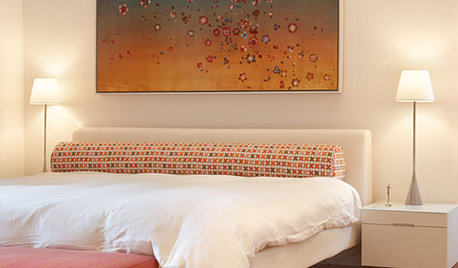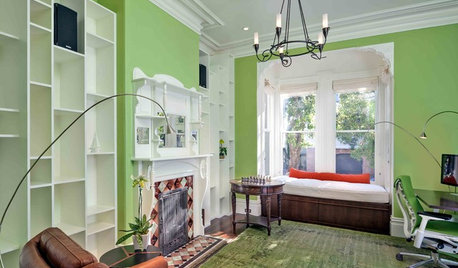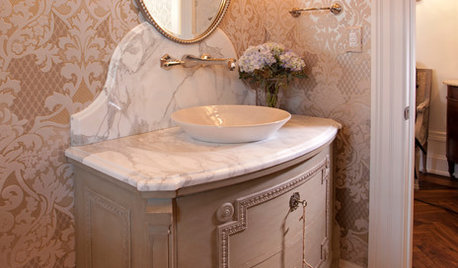First of all - pardon/ignore to weird stuff GW does to '-, etc. when material is copied from Word to here! I hope you can still read it without too much difficulty :-)
The Analysis of Beauty by William Hogarth, published in 1753, was quite interesting � aside from the mind-numbing, dry, academic introduction in the edition I bought! The first six chapters were the most general, briefly explaining the elements of his theory. The longer later chapters were very focused on the use of the principles in painting and sculpture of the human body � and the lines of beauty and grace in dance and other movement!
The fundamental principles that give grace and beauty in his theory are: Fitness; Variety; Uniformity; Simplicity; Intricacy; and Quantity. It�s interesting to compare that list to various listings of elements of design�
Fitness and Variety seem to be the ones to which he gives most weight.
Beatrix Farrand obviously agreed with Fitness as a key issue. Her favorite saying appeared to be: 'What would be fair must first be fit.' That line appears to come from a book by Charles Eliot, a partner of Frederick Law Olmstead Sr. but I�d guess its roots are in Hogarth�s theory. (Fit = suitable for the use intended)
�The art of composing well is the art of varying well� is a line Hogarth repeated often in the book. Too much variety is as bad as too little. He used �variety� in a broad sense. For example, he said �a gradual lessening is a kind of varying that gives beauty� and gave the example of a pyramid diminishing from its base to its point, and perspective views � i.e. things that appear to diminish when they actually do not.
Uniformity/regularity/symmetry he saw as relating to fitness and not elements of beauty on their own. "We find it [uniformity] necessary in some degree, to give the idea of rest and motion, without the possibility of falling. But when any such purposes can be as well effected by more irregular parts, the eye is always better pleased on account of variety.�
�Simplicity, without variety, is wholly insipid, and at best does only not displease�� Other than pyramids, he doesn�t like objects of straight lines because they lack variety. Simplicity�s role is that it �enhances the pleasure of variety, by giving the eye the power of enjoying it with ease.� So he preferred the oval to the circle; the triangle to the square; the pyramid to the cube, etc. because the oval, triangle and pyramid, while having simplicity, have more variety.
Intricacy he related to the need for the mind to be employed and the pleasures of pursuit! �Every arising difficulty, that for a while attends and interrupts the pursuit, gives a sort of spring to the mind, enhances the pleasure, and makes what would else be toil and labour, become sport and recreation.� (Hmmm� I think reading all this stuff falls in that category for me!)
The discussion of intricacy led him to prefer objects composed principally of waving and serpentine lines that �lead the eye a wonton kind of chace [sic].� But he warned that an excess is to be avoided in intricacy as well as all the other principles or you end up with a disagreeable result because the eye would be perplexed.
Quantity deals with the magnitude of things, noting that vast things draw our attention and raise our admiration by sheer size, but it�s better when quantity is combined with grace. Quantity + grace = greatness, but beware excess or quantity becomes clumsy, heavy or ridiculous.
All that finally brings us to the matter of lines�.
His order of preference for lines was based on variety : straight lines vary only in length and were therefore considered least ornamental; curved lines can be varied by both degrees of curvature and length, so they are more ornamental; combining curves and straight lines increased ornamental value further; the waving line � the line of beauty � varies more because it is composed of two contrasting curves; the serpentine line � the line of grace � varies further by curving in three dimensions (it�s illustrated as the line of beauty drawn around a cone - see object # 26 below.)
He considered there was only one precise line of beauty � but did not define it specifically, other than by showing 7 wavy lines varying from almost straight to very bulging. (see diagram #49 below)
{{gwi:8172}}
He then noted the 4th line as the precise line of beauty; neither too stiff/mean nor too clumsy/deformed. (I prefer #3�.)
So that�s a basic summary of where the �line of beauty� comes from. Relating that to my dislike of wiggly lines, I note several things:
- I like and use both straight lines and curves and think he ignored the beauty and power to be found in straight lines. There was a lot of politics of various sorts involved in his position/opposition to the views of others of his time who gave more weight to a more formal style of beauty (i.e. one with more straight lines).
- Many (most?) lines I consider wiggly would fall into his clumsy/deformed categories!
- I think a more precise definition of the degree of curvature relative to length might have been useful. Since he was not writing in the context � or scale � of landscape design, he probably didn�t feel it was necessary or desirable as the human body was really his reference scale. When I look at wiggly lines, the sorts of things that jump out at me as making them unattractive to ugly are too big a bulge in too short a length or too many bulges in too short a length, the bulges repeat in a boring pattern, and so on�
Clearly just because a line of a bed edge is wavy does not mean it is a line of beauty a la Hogarth. I think if you look at the examples of wavy edges posted on the thread about curves vs. wiggles, you can see that most are not Hogarth�s #4 line.


















User
inkognito
Related Discussions
Curved line not wiggles - interesting small UK garden
Q
Neighbor planted hedge of Hemlocks 4-6 inches from property line
Q
Cloud with a silver lining.
Q
Pseudotsuga menziesii 'Graceful Grace'
Q
woodyoak zone 5 southern Ont., CanadaOriginal Author
Yardvaark
woodyoak zone 5 southern Ont., CanadaOriginal Author